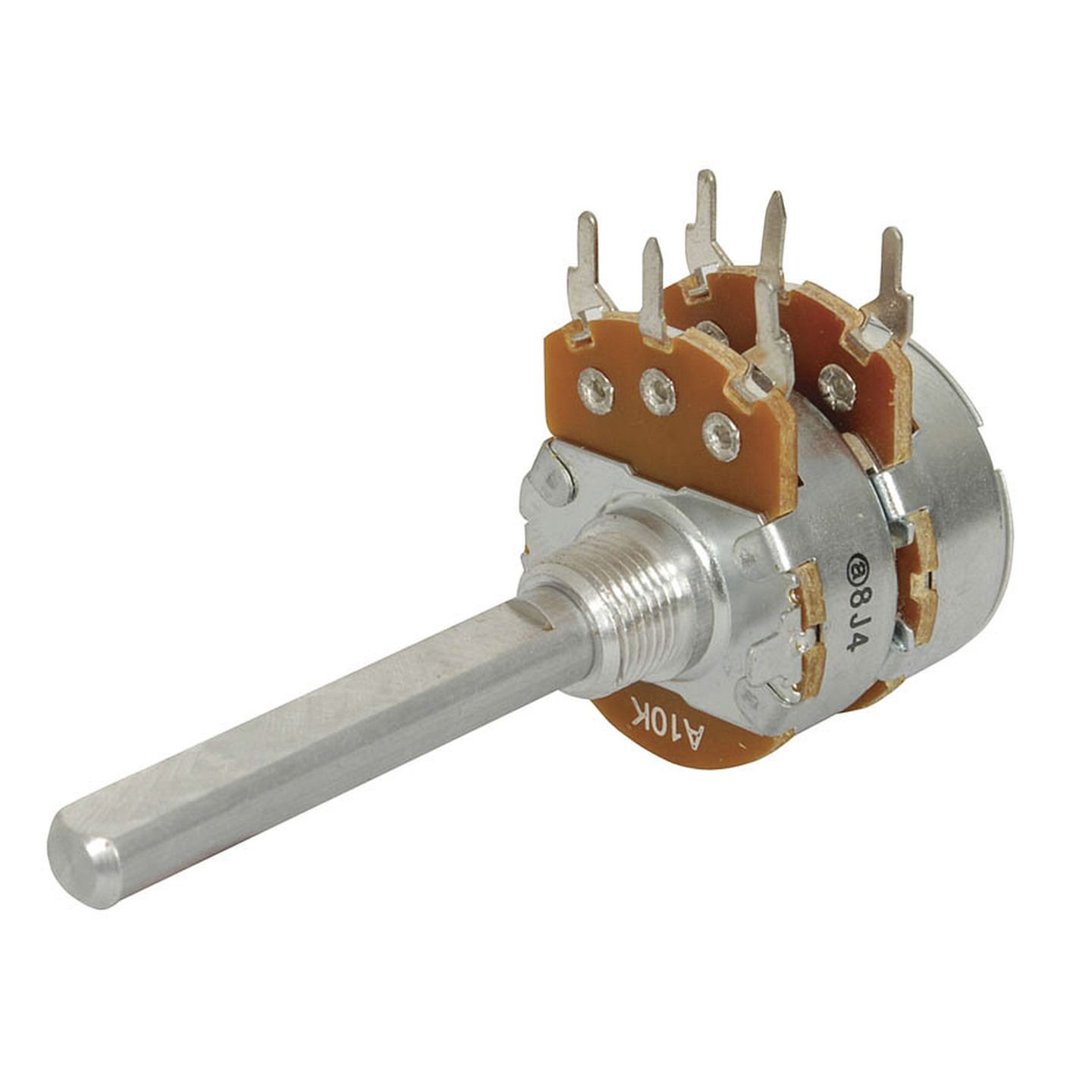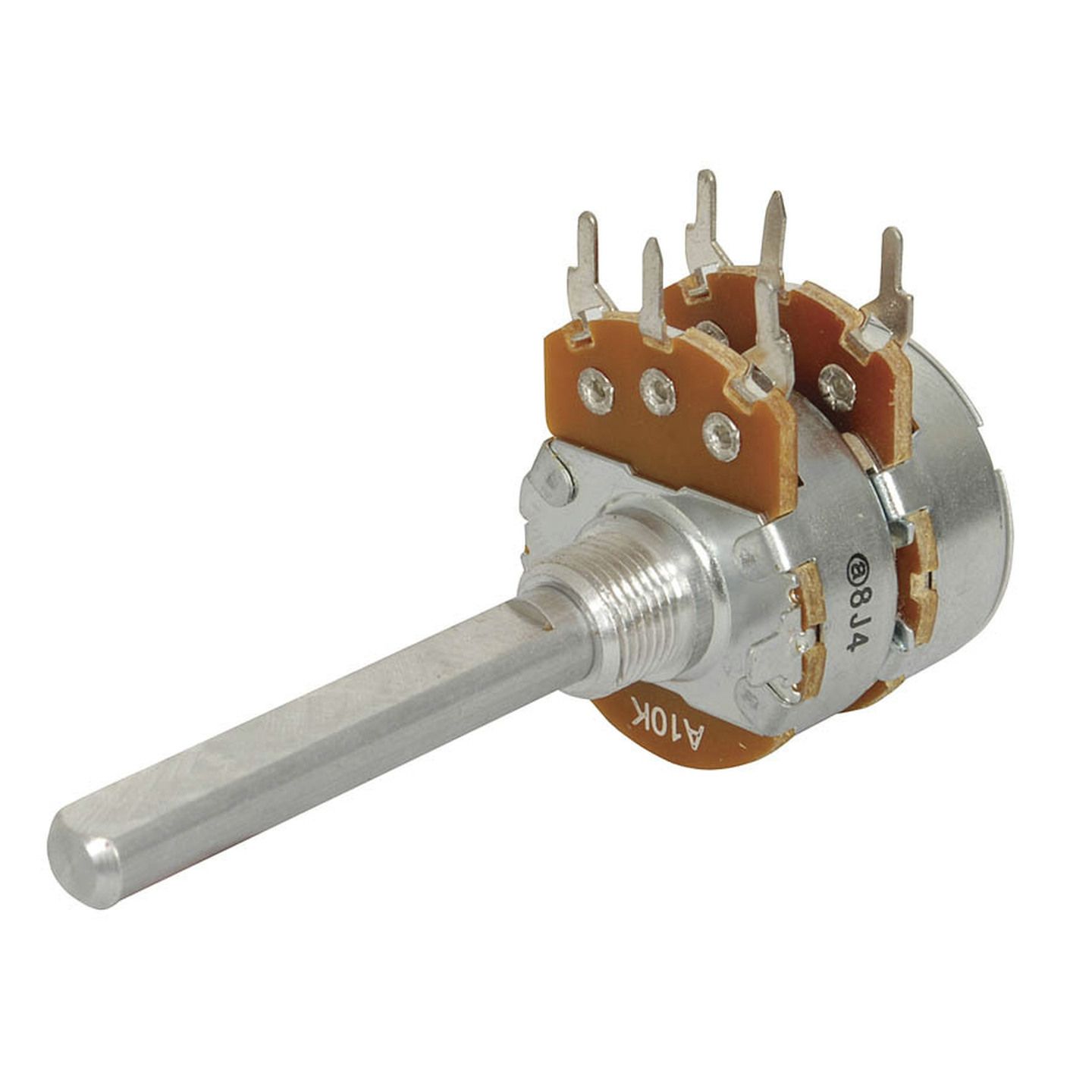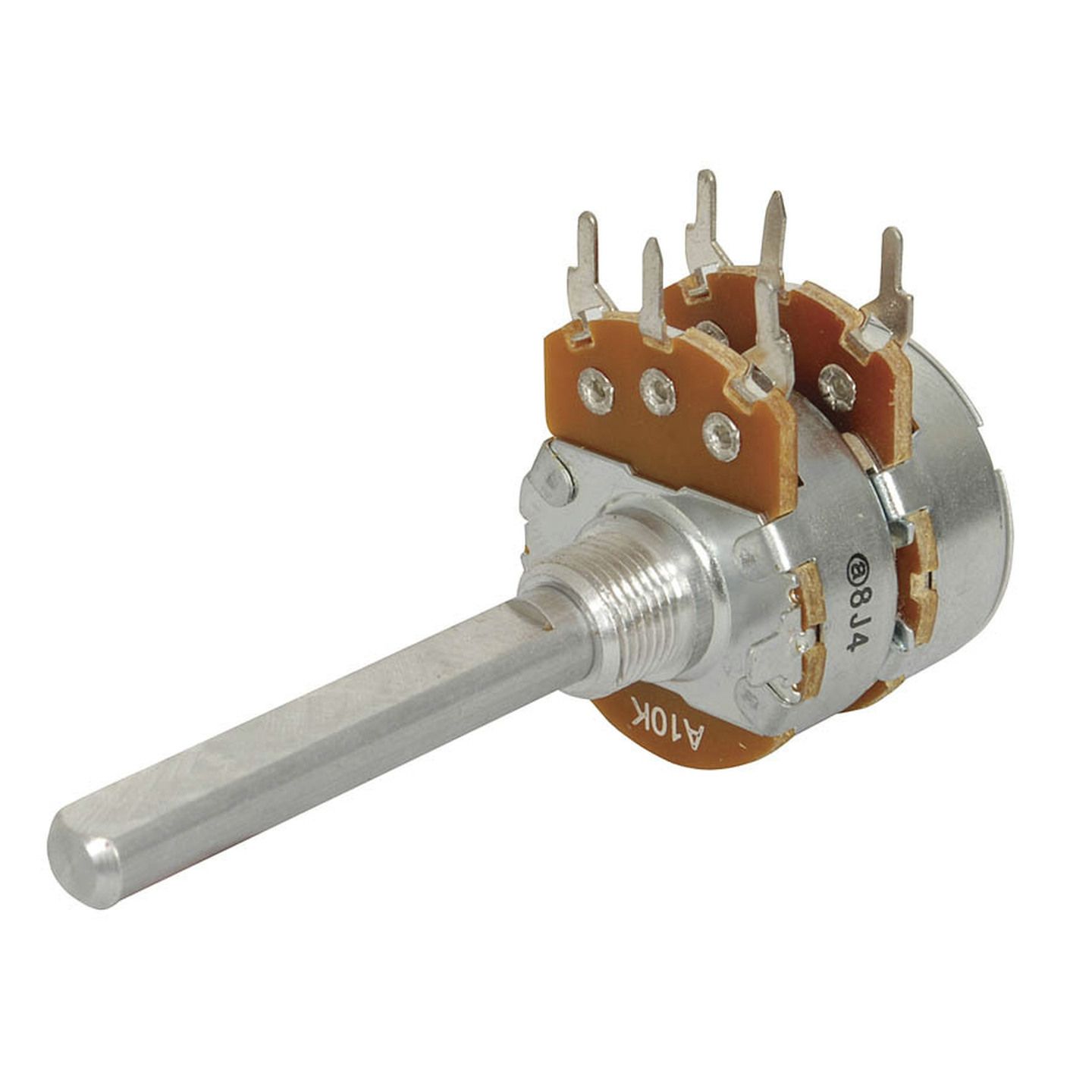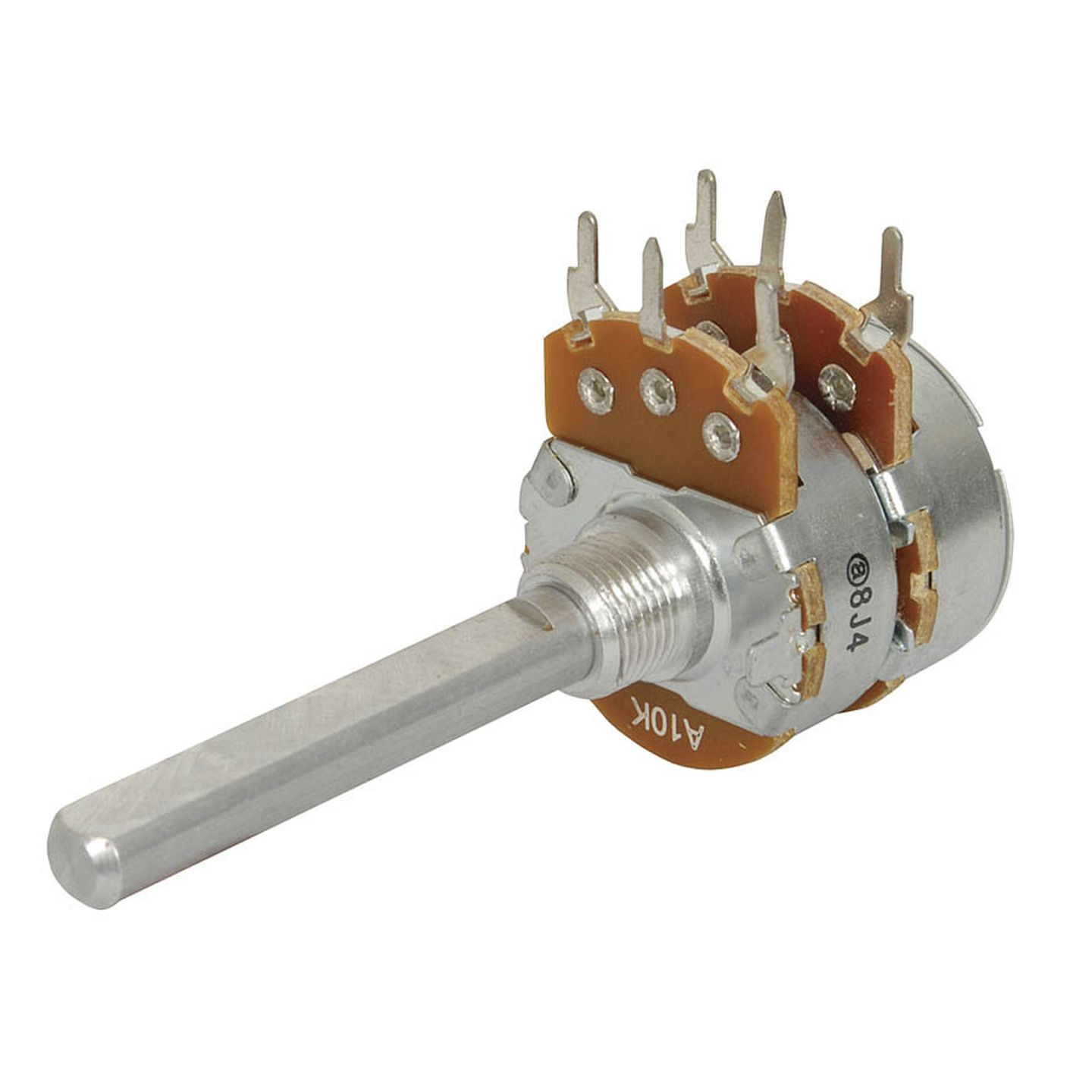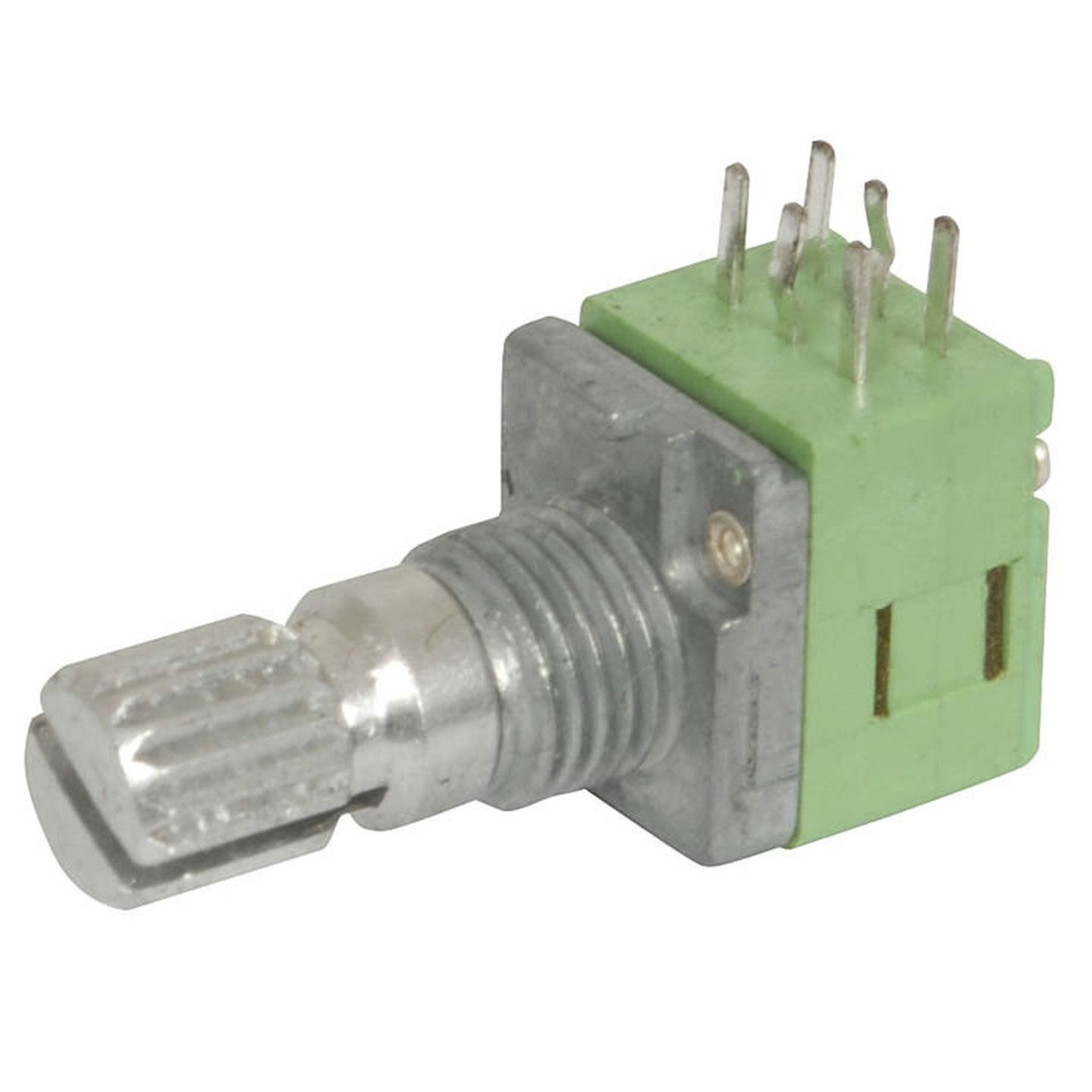10k Ohm Linear (B) Double Gang 24mm Potentiometer
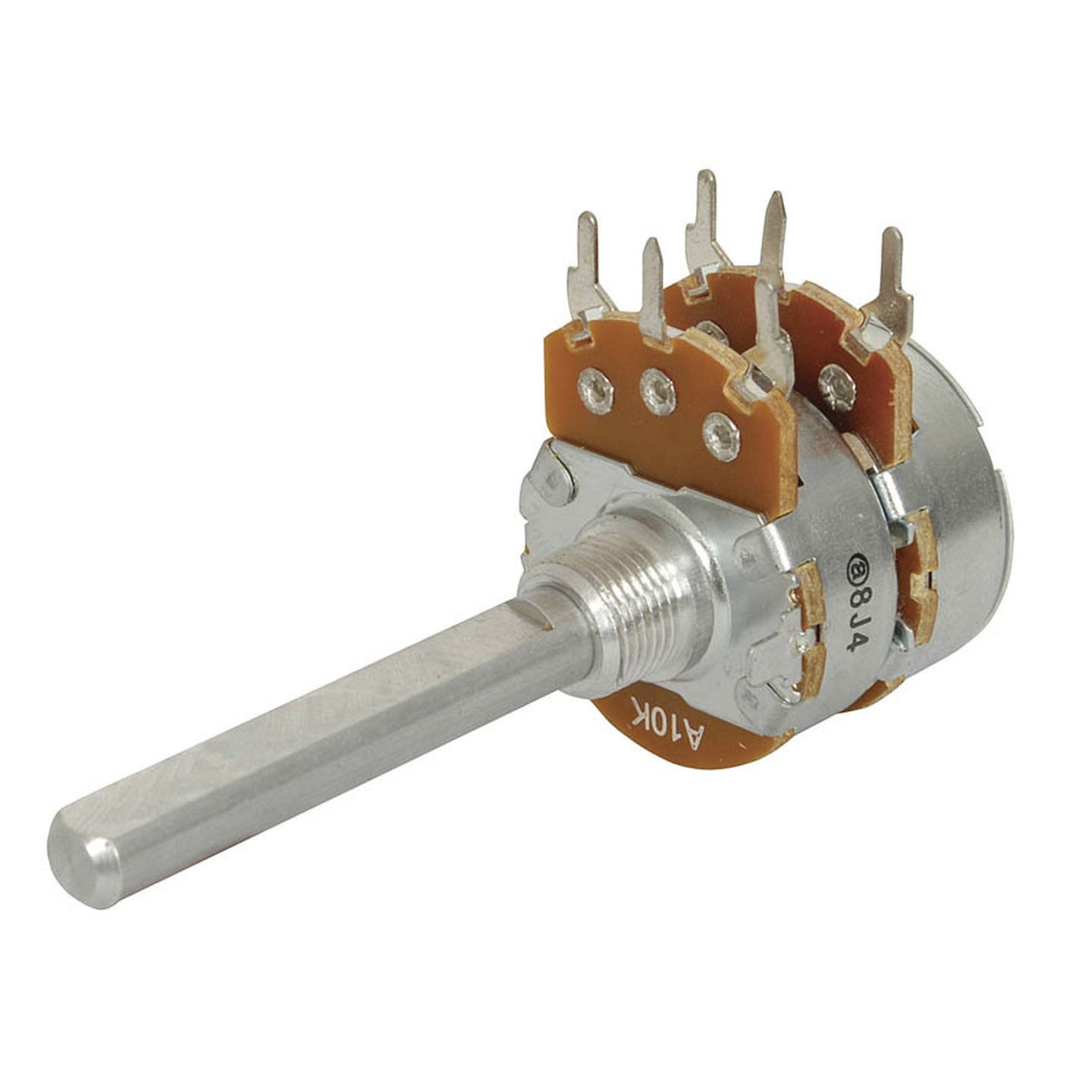
Bulk Pricing
Available variants (26)
Store
With imperial standard shaft & bushings made to our rigid engineering specifications. They have genuine 6.35mm (1/4) shafts with a flat machined 25% of the diameter for grubscrews or interference fit knob mounting. The shaft is 38mm long. The bush is a 3/8 32 T.H.D. type which we believe is necessary for good fixing to a panel. Another important feature of the pots is their PCB mount capability. The pins are rigidly mounted on phenolic with the centre pin offset from the two outer terminals. When soldered into a PCB, the pot is quite rigidly held on its own. Double gangpots are held in 6 places and require no extra mechanical mounting assistance. The pins are large enough to terminate screened cable, etc., if the job requires hard wiring. An engineering drawing appears below. You may safely use it to design PCB artwork etc., as we have standardised this design.
Features:
- Value10K
- Power rating is 0.5W max
Potentiometer Diameter
24mm
Number of Gangs
Dual gang
Log or Linear?
Linear
Potentiometer Knob Type
Imperial D
Potentiometer Terminal Type
Solder Legs
Potentiometer Shaft Length
38.5 mm
potentiometer nut size
24mm(3/8inch 32THD)
AC Voltage rating
150.0 V
Passive mount type
Panel,Through Hole
Passive connector type
Solder Legs
Component package
Metal can
Passive number of legs
3.0 count
Passive marking code
Number code
Pack Quantity
1.0 pc
Resistance level
10.0 kΩ
Continuous Power
0.5 W
Packaged Dimensions
2.5cm(Length) x 3.7cm(Width) x 7.0cm(Height)

14 September 2023
Variable Resistors
Read more
about Variable ResistorsDiscover more
25k Ohm Linear (B) Double Gang 24mm Potentiometer
CAT.NO: RP3708
Available for delivery
50k Ohm Linear (B) Double Gang 24mm Potentiometer
CAT.NO: RP3710
Available for delivery
100k Ohm Linear (B) Double Gang 24mm Potentiometer
CAT.NO: RP3712
Available for delivery
10k Ohm Logarithmic (A) Double Gang 24mm Potentiometer
CAT.NO: RP3756
Available for delivery
10k Ohm Linear (B) Double Gang 9mm Potentiometer
CAT.NO: RP8706
Available for delivery


